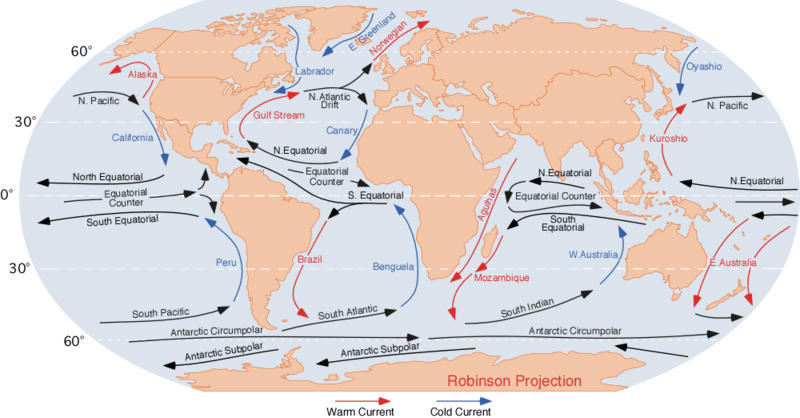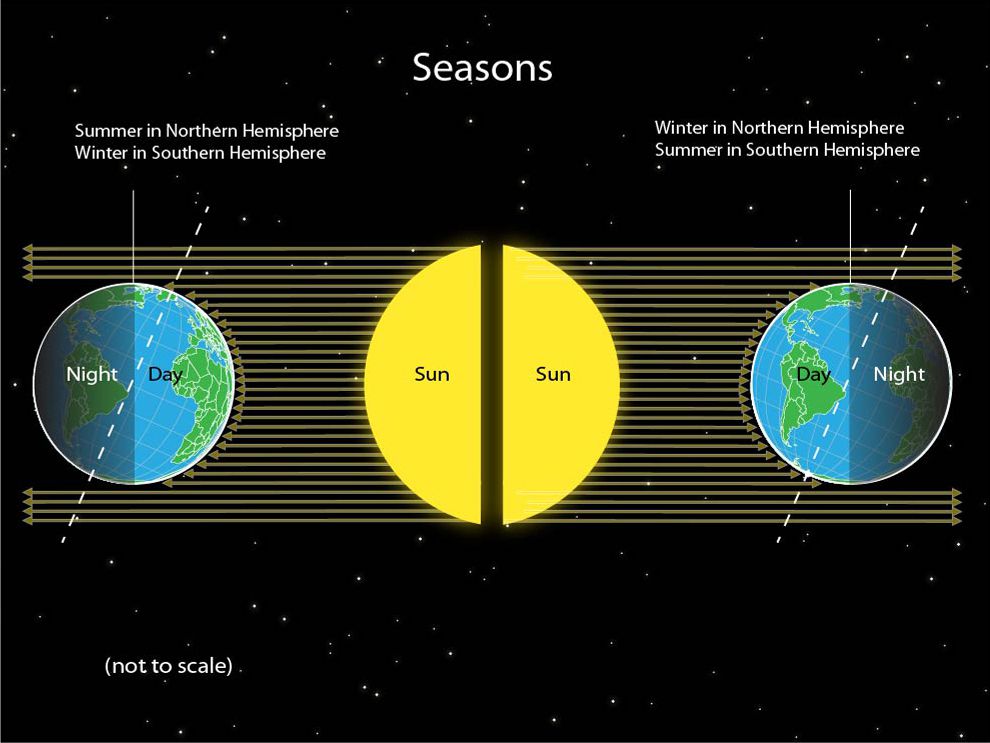EXPLORATION: Weather and Climate
3. Temperature and Climate
Why does temperature vary so much in the world?
Ocean Currents: can either warm or cool a coastal area by approximately two degrees Celsius. The image below shows the major cool and warm currents of the world.

Note: Winds produce currents.
- e.g. Los Angeles: California Current (cool)
- Scotland: Norwegian Current (warm), gives warm winters
- Halifax: Gulf Stream Current (warm)
Latitude: the further north you go in the northern hemisphere, the colder it gets.
Why?
-
- Curvature of the earth: the sun strikes the earth in a very concentrated fashion at the equator, whereas at the poles, the sun's rays are much more spread out.
- The seasons: spring, summer, fall, and winter result in different
amounts of heat coming to the earth. This is caused by the changing
position of where the sun is directly overhead on the earth's surface
during the year and the tilt of the earth's axis. In the northern
hemisphere's winter, we are titled away from the sun and receive less
daylight. During summer, we are titled towards the sun and receive more
daylight.
Note that the polar regions of Canada can have 24 hours of darkness in winter and 24 hours of daylight in summer.
i.e. Mar. 21 (Vernal Equinox) and Sept. 21 (Autumnal Equinox): the sun is directly overhead at the equator.
Dec. 21 (Winter Solstice): the sun is directly overhead at the Tropic of Capricorn (23.5 S).
June 21 (Summer Solstice): the sun is directly overhead at the Tropic of Cancer (23.5 N).
Look at the diagram below, from National Geographic, which shows how the angle of the sun's rays on the spherical surface of Earth produces our seasons.

Altitude: the higher you go up, the colder it gets.
Why? Less dust, greenhouse gases, water vapour, etc. to trap heat coming up from the earth's surface.
Environmental lapse rate: 1 deg. C drop for every 150 m rise or 6.4 deg. C drop for every 1000 m
Mountain Barriers: impede the movement of cold air masses. This is due to the fact that cold air is dense and generally stays near to the ground.
e.g. Vancouver is shielded from most Arctic air masses by the Rockies and Coast Mountains.
Mountains can also result in warm winds descending down slope.
Prevailing Winds: southerly: brings warmer air - northerly: brings colder air
Nearness to Water or Continentality: the closer a city is to a large body of water, the more moderate will be its temperatures (i.e. maritime climate), whereas the further away a city is from the water, the greater the temperature extremes (i.e. continental climate).
Amount of Cloudiness:
Cloudy conditions generally
produce cooler days (i.e. less solar radiation is able to reach the
earth) and warmer nights (i.e. clouds act as a blanket to keep in heat
emitted by the earth)
- the amount of cloudiness is dependent upon the air pressure
Low Air Pressure: cloudy conditions
High Air Pressure: clearer conditions
Slope of the Land (also known as Aspect)
- largely a micro-climatic control
- in the northern hemisphere, a north facing slope results in cooler temperatures whereas a south facing slope has warmer temperatures